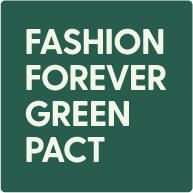Viscose: The Renewable Fiber
With awareness circulating the textile industry’s sustainability contributions, viscose is among the top man-made cellulosic fibres (MMCF) to get attention over others like modal, lyocell, and cellulose acetate. Viscose holds the greatest share of MMCF production, making it a significant resource in the textile industry as it is derived from wood pulp. The initial reason for being produced was to replace silk in 1883, as it’s significantly cheaper to make. The term “viscose” itself holds an important story, referring specifically to the solution of wood pulp that gets transformed into fabric.
Because of its nature, viscose relies heavily on tree wood pulp from species like beech, pine, eucalyptus, and occasionally bamboo. The plant is chipped into wood pulp and dissolved using chemicals, creating a brown wood pulp solution. Once washed, treated, and bleached, the pulp is treated with carbon disulfide and then dissolved in sodium hydroxide to create the solution referred to as “viscose.” The solution is then forced through a spinneret, a machine that creates filaments, called regenerated cellulose. After spun into yarn, the fibre is woven or knit into what is also known as rayon.
Because each production process differs, viscose comes in various forms, with Lyocell being the most environmentally friendly type. This method results in little waste products and uses fewer chemicals, making it far more eco-friendly than conventional viscose production. Its primary natural resource–trees–is what gives viscose its reputation for being renewable. This is because plants in themselves are renewable with careful and proper sourcing protocols. Although the use of chemicals remains necessary for this semi-synthetic fibre’s production, there is an argument to say that it’s a more sustainable fibre than other fully synthetic fibres, such as polyester.
As the textile industry continues to strive for a transparent and sustainable world, increasing work is being put into the improvement of the process of fibres such as viscose. With more renewable fibres at the forefront of production materials, the more sustainable products using such textiles can become.
Learn more about becoming a signatory of the Fashion Forever Green Pact and how you too can become a change maker
